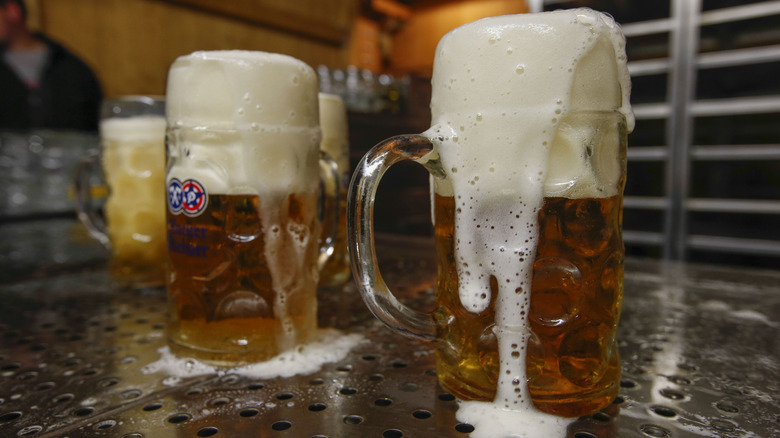A Japanese Design Company May Have Just Invented The Perfect Beer Can
If you thought beer can designs were perfected ages ago, you're in for a pleasant surprise. Sure, the modern aluminum can has been in use for decades now, after being invented by Ermal Fraze in Ohio in the '60s. And the basic can design has varied little since its initial invention. However, a Japanese design firm known for its tongue-in-cheek inventions has developed a smarter beer can designed to ensure a better pour.
As Dezeen reports, Nendo has been hard at work on a brand-new can to help beer lovers to achieve the "golden ratio," a beer-to-foam ratio of 7:3. While some people claim that minimal foam is best when it comes to beer, drinkers in Japan take a different approach. According to Nendo, achieving the perfect layer of foam protects beer from air exposure, which then preserves its "aroma, flavor, and carbonation."
To this end, the bright minds at Nendo developed a can that allows for the right amount of foam to protect the integrity of the brew splashing around underneath. While the design is decidedly simple, an impressive amount of ingenuity went into the process.
Two tabs are better than one
The design team at Nendo hopes to solve the golden ratio problem by adding a second tab to aluminum beer cans. The first tab, conveniently labeled with a 1, creates a slight opening that increases pressure inside the can to generate foam. The drinker can then pour the desired amount of foam into their glass before moving onto tab 2. Upon pulling the second tab, the top of the can is fully opened to allow the beer to pour out. According to Nendo, this is the perfect way to ensure the optimum foam level on the beer.
When it comes to the design of the golden-ratio can, Nendo's invention looks like any conventional beer can you might find at the grocery store. The primary difference is the two-tab design, which slightly angles tabs 1 and 2 away from each other.
As for where you can find Nendo's innovative beer can, the product appears to still be in the prototype stage. However, with a design this innovative, you may end up seeing dual-tab cans sooner than you think.

